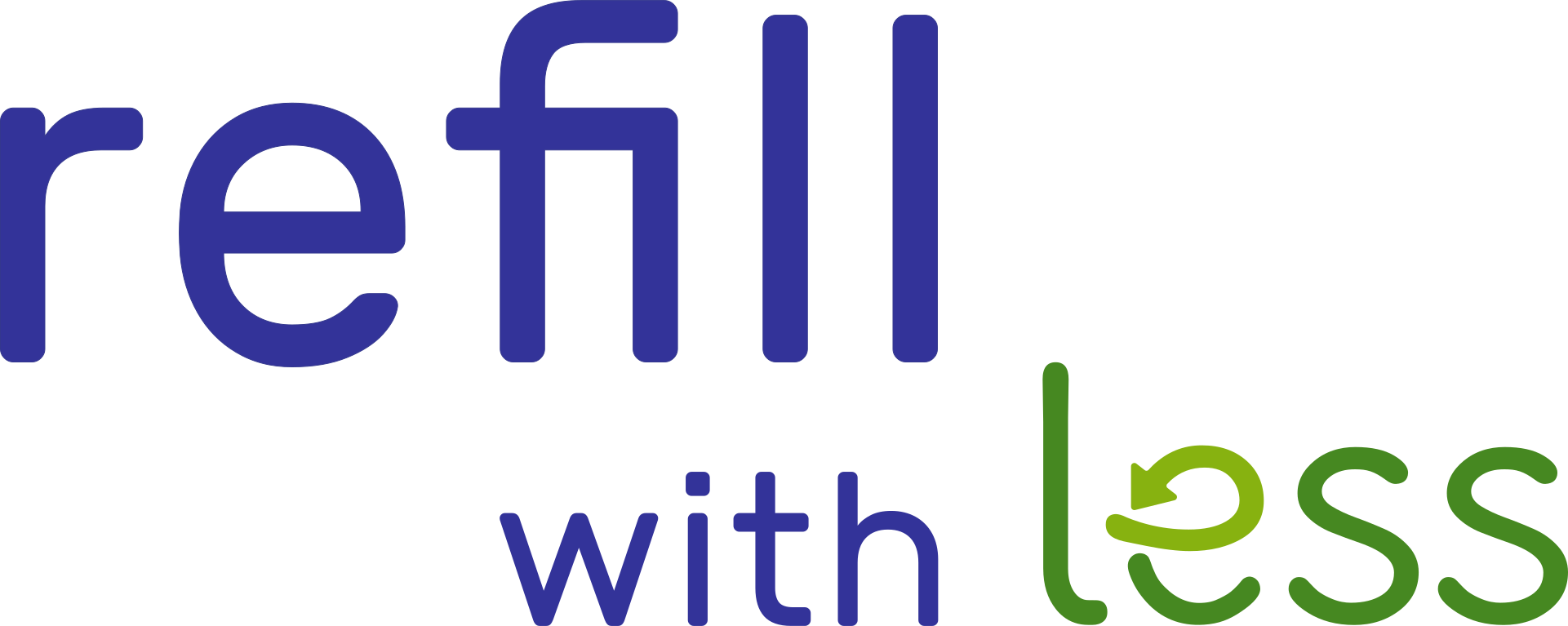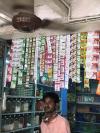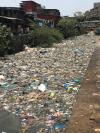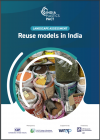The Fight Against Plastic Waste Isn't Going Well. Time To Focus On Reuse
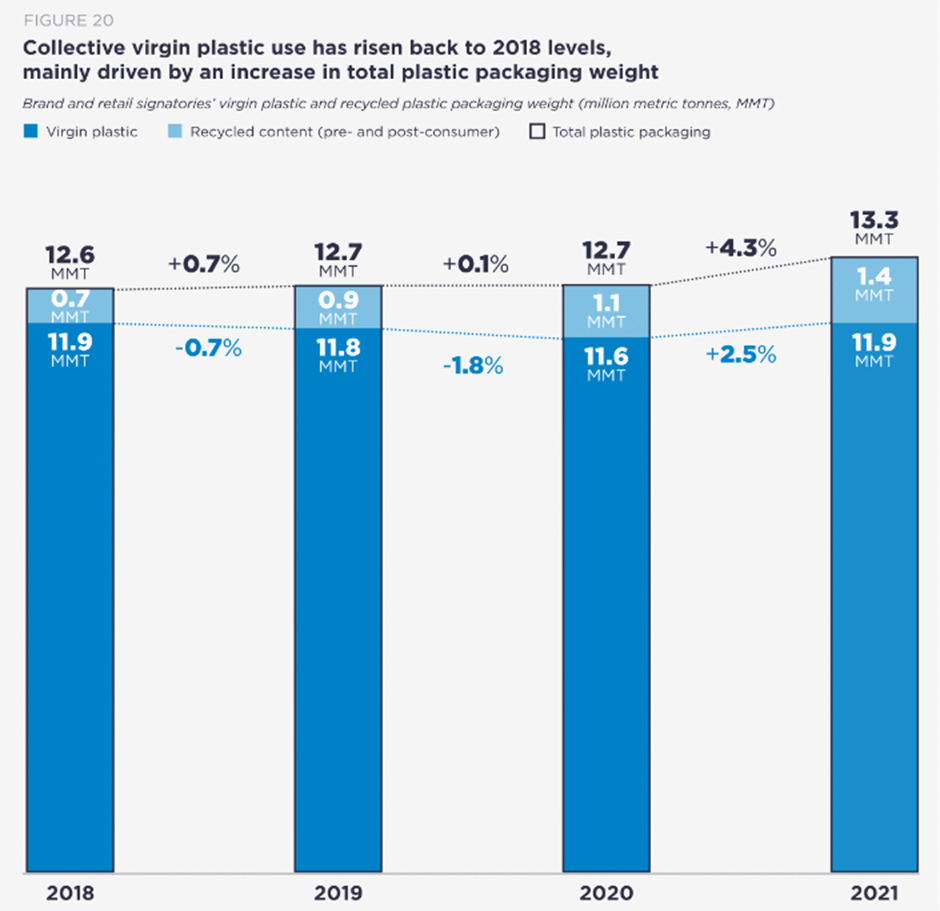
Plastic use amongst CPG companies is rising, despite global commitments to plastic use objectives promoted by Ellen MacArthur Foundation and WRAP. This is because the objectives allow corporations to focus on using ‘recyclable’ plastic and downplay a key strategy that could quickly make a difference: reuse.
Business360 research shows how consumer packaged goods (CPG) companies are struggling to make progress reducing their reliance on plastic.
One of the best ways to see this is through the Ellen MacArthur Foundation (EMF) Global Commitment Progress Report, the latest data of which runs to 2021 and shows how overall plastic use across brand and retail signatory companies in 2021 is up 5.6% on 2018. Virgin plastic usage went back up to 2018 levels.
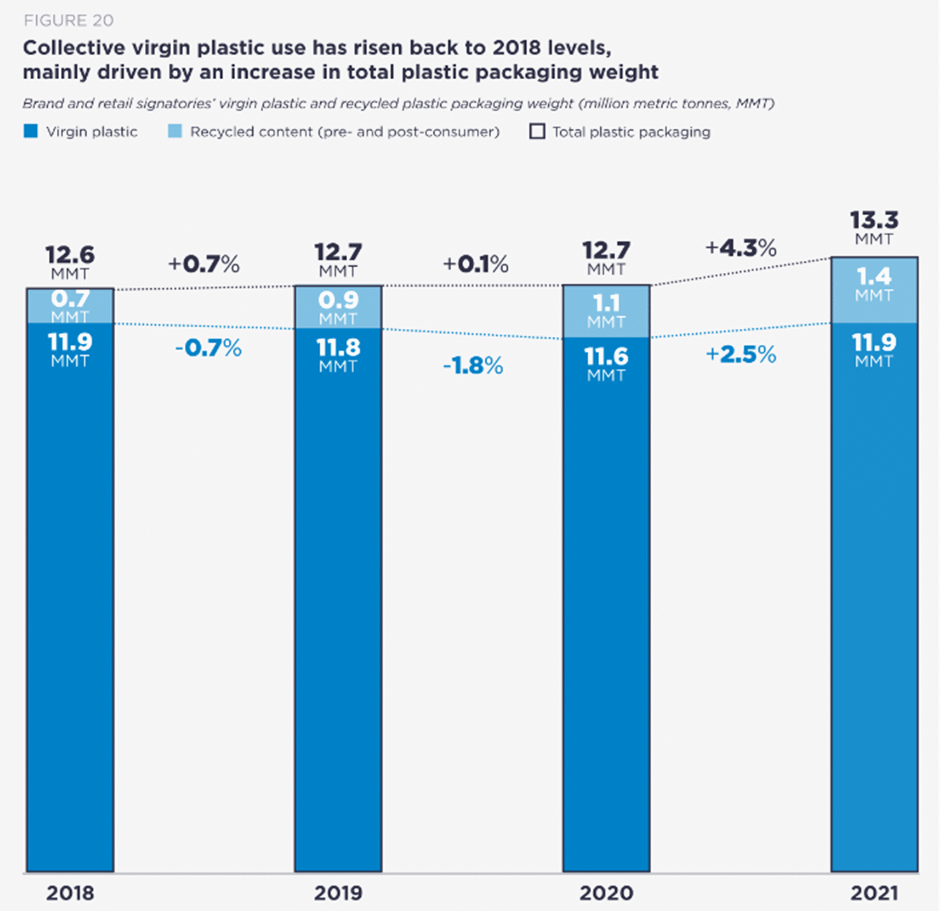
Growth in total new plastic packaging since 2018 for some of the large FMCG signatories was much higher, including McCormick (23.1%,), McCain 16.1% and Mars (10.2%), and the two largest users showed strong growth too: Coca-Cola (8.9%) and PepsiCo (8.7%).
Data for individual FMCG companies also shows continued heavy reliance on virgin fossil fuel-based plastic.
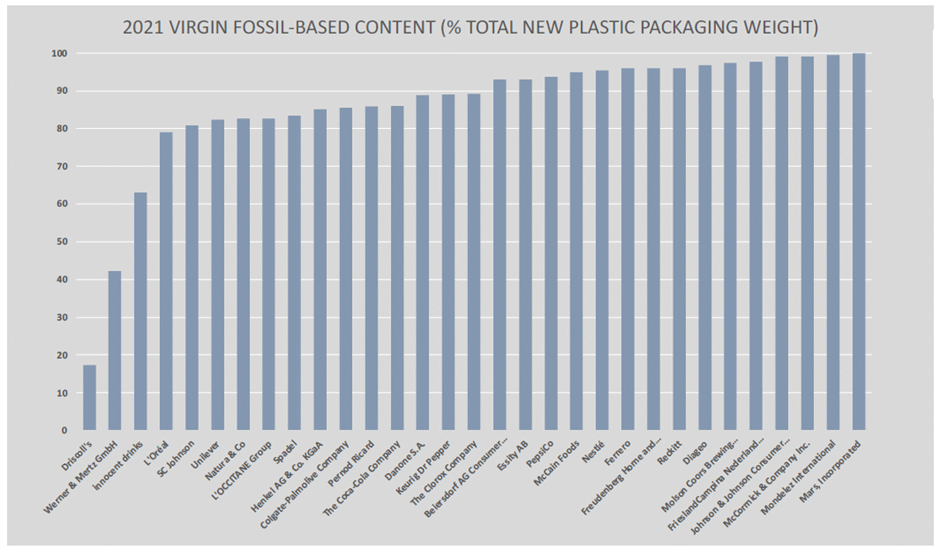
These companies have been focusing on reducing plastic use for years now, and especially virgin plastic, so how can this be?
Some history
Back in 2016 Ellen MacArthur Foundation and World Economic Forum worked to develop the New Plastic Economy as a framework[1] to reduce plastic use. In 2018, and to great fanfare, Ellen MacArthur Foundation promoted the New Plastic Economy, with WRAP promoting its Plastic Pacts ‘enabled by the New Plastics Economy’[2], and companies signed on.
Countries and companies that together represent over 20% of global plastic use committed to plastic use abatement measures with a 2025 deadline.
Signatories agreed to a range of targets:
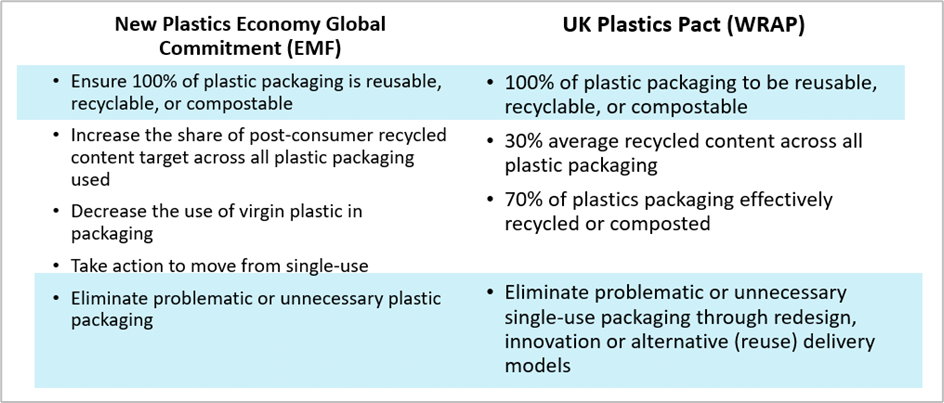
Signatory companies have been working to meet these targets and each year publish performance data.
But instead of falling, plastic use is rising, so what’s gone wrong?
In our view, this outcome was inevitable because the framework is flawed. The commitments have no limits on overall plastic use and instead allow companies to focus on ‘recyclability’ of plastic packaging, which is of little use.
Authors of the Business360 report predicted a poor outcome in a 2019 article on LinkedIn and since various commentators have questioned the wisdom of these goals. So what’s the problem?
The ‘recyclable’ cop out
Both WRAP and Ellen MacArthur Foundation include the target that ‘100% of plastic packaging is reusable, recyclable, or compostable’. By including these three strategies as options, Ellen MacArthur Foundation/WRAP let signatories choose the easiest, regardless of which best lowers plastic use. And of these three options, two are effective but difficult and one is relatively easy. And you guessed it, the easy one doesn’t lower plastic use at all.
Making packaging reusable so the same packaging is used many times over is a good solution since it lowers overall usage, even if the packaging remains plastic. Reuse also goes hand in hand with reducing plastic packaging since multiple uses can make more costly non-plastic packaging (stainless steel, glass, china etc.) economically viable alternatives. Reuse solutions can for many products quickly and economically prevent 60% of plastic waste and sometimes over 95%. But while making packaging reusable is technically feasible, creating a business model to support it requires rethinking supply chains and changing consumer behaviours. Both are doable but mean companies must change how they do things, adding costs and lowering margins, which they’re reluctant to do.
Having packaging that composts would be a great help, but making packaging compostable remains technically challenging, is a long way from commercial viability and could only ever work for limited use cases.
But making packaging ‘recyclable’ is comparatively easy. There are some challenges, but for the most part it means removing plastics that aren’t recycled and replacing it with types of plastic that are or could be.
Switching out non-recyclable plastic for ‘recyclable’ plastic is a manageable task for corporations and unsurprisingly it's the one they’ve focused on. A massively disproportionate share of the effort by CPG companies is going into ensuring 100% of its plastic packaging is ‘recyclable’.
We see this from the latest Ellen MacArthur Foundation data, which show the strategies companies have used to make progress.
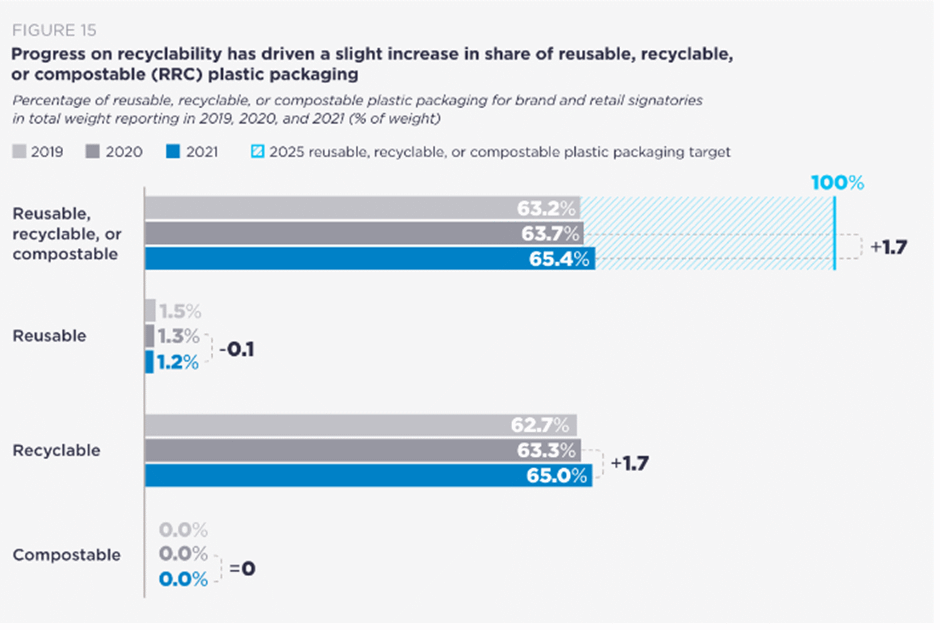
Against the objective of ensuring that ‘100% of plastic packaging is reusable, recyclable or compostable’, companies are making incremental progress. In 2021 it stood at 65.4%, up 1.7 points on 2020. But ‘recyclable’ accounts for all the progress; the share of packaging that is compostable remains at zero and the share of packaging that is reusable fell 0.1 points (it’s at such a low base this decline doesn’t affect the overall figures).
But what is ‘recyclable’?
On the surface, making plastic ‘recyclable’ sounds like a laudable goal, but dig a little detail deeper and it becomes a house of cards.
Plastic is considered ‘recyclable’ if there is a 30% or more post-consumer recycling rate in multiple regions, collectively representing at least 400 million inhabitants[3]. By picking high recycling countries, like much of the EU and South Korea etc., signatory companies can piece together an area of 400 million people that reach this bar. But 400 million people is just 5% of the world's population. Across much the world, recycling is very limited and often entirely absent. Allowing plastics recycled at 30% by just 5% of the world's population means that plastics recycled at a global average rate of 1.5% could still qualify as ‘recyclable’.
It's now well-established that most plastic doesn’t get recycled and, globally, its unlikely to exceed 30% this century. OECD says the share of plastic waste successfully recycled was 9% in 2019 and is projected to rise to 17% in 2060[4]. Making plastic ‘recyclable’ is largely meaningless.
But even when plastic gets recycled, it’s not a great help. Recycled plastic usually needs to be blended with a larger amount of virgin plastic before it can be reused, over 99% of which comes from fossil fuels[5]. Building demand for recycled plastic merely ensures ongoing dependency on fossil fuels.
Brands stamp ‘recyclable’ in bold on their packaging and consumers take comfort from it, but companies know it’ll make no difference.
And all the while WRAP and Ellen MacArthur Foundation provide cover, checking progress against commitments that will not make a dent in plastic use or the amount of plastic that goes to landfill or leaks to the environment.
Time to pivot to reuse
This is an opportunity for WRAP and Ellen MacArthur Foundation to take stock, address their flawed frameworks and refocus on goals that will make a difference.
Specifically, we need targets and corporate commitments for a meaningful and rising share of their products by volume sold through reuse solutions.
[1] https://www3.weforum.org/docs/WEF_The_New_Plastics_Economy.pdf
[2] https://wrap.org.uk/taking-action/plastic-packaging/initiatives/the-uk-plastics-pact
[3] https://emf.thirdlight.com/link/Reporting-Resources-2022/@/preview/2
[4] https://www.oecd-ilibrary.org/environment/global-plastics-outlook_aa1edf33-en
[5] https://www.ciel.org/issue/fossil-fuels-plastic/



